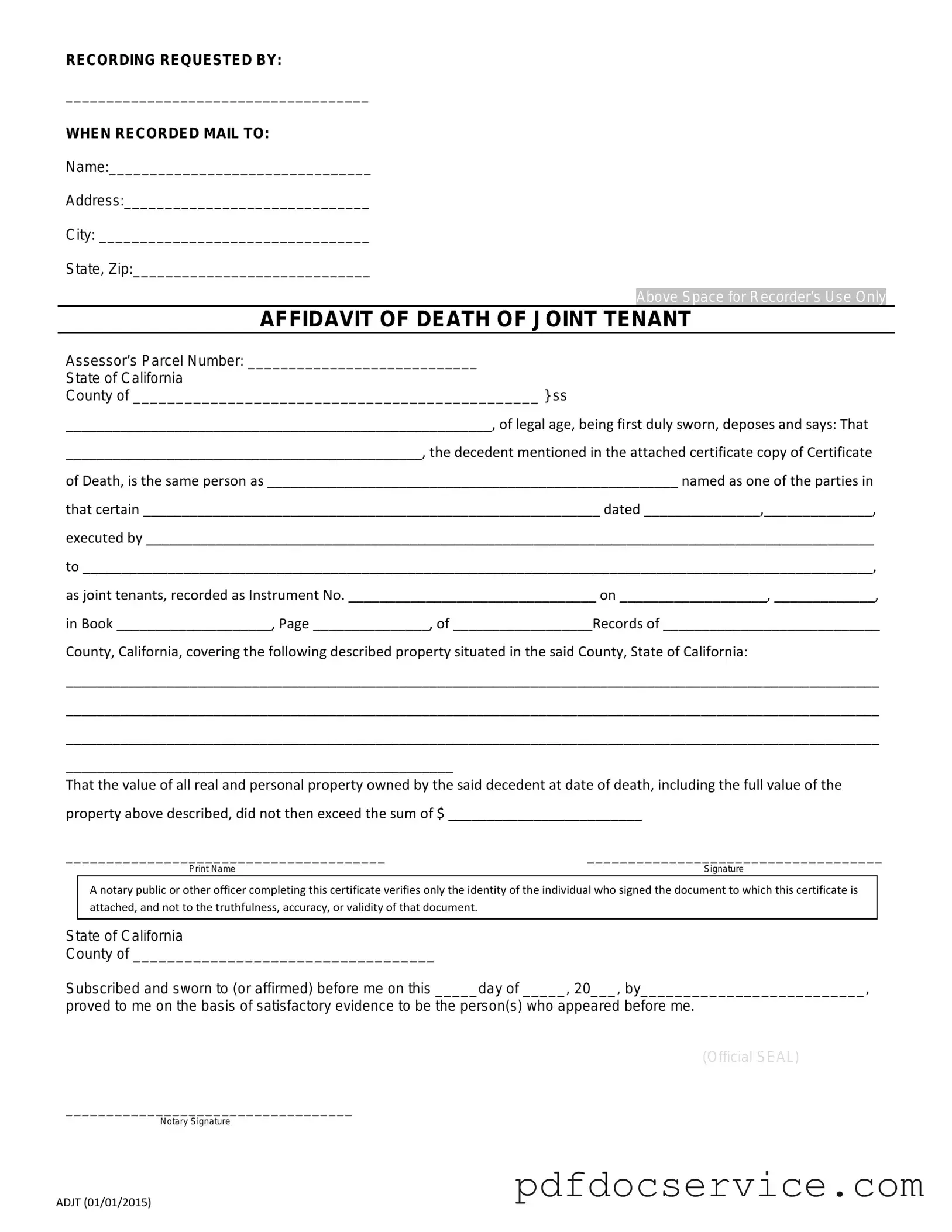Fill Your California Death of a Joint Tenant Affidavit Form
The California Death of a Joint Tenant Affidavit form is a legal document used to establish the death of one joint tenant in a property ownership arrangement. This affidavit serves to clarify the transfer of property rights to the surviving joint tenant, ensuring a smooth transition of ownership. Understanding this form is essential for those navigating property matters in California after the loss of a joint tenant.
Open California Death of a Joint Tenant Affidavit Editor
